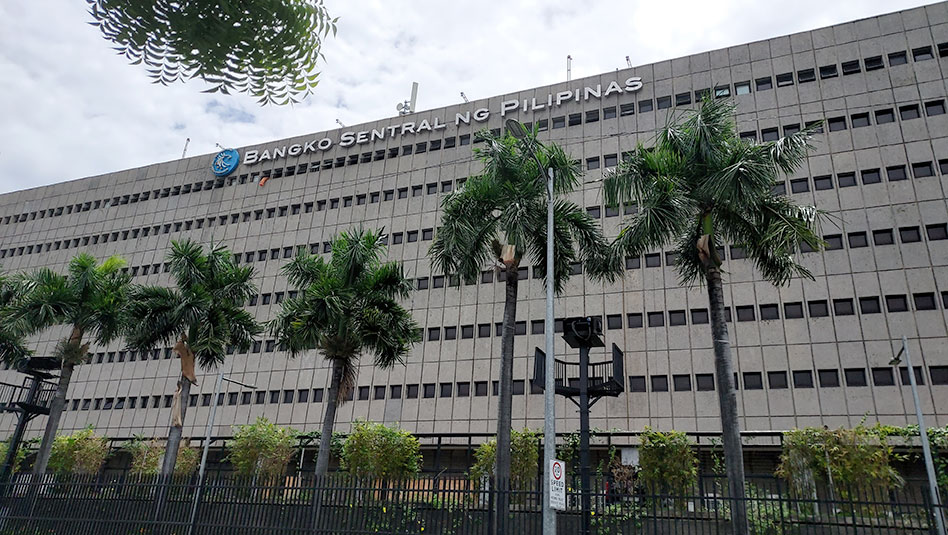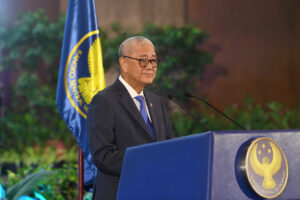




Policy Rate Updates: Closer to BSP’s Goldilocks moment
 DOWNLOAD
DOWNLOAD

Inflation Update: Speeds up but remains below target
 DOWNLOAD
DOWNLOAD

Monthly Economic Update: Fed back on track
 DOWNLOAD
DOWNLOAD


Remolona wants further RRR cuts

The Bangko Sentral ng Pilipinas (BSP) intends to further reduce the amount of cash that banks must have in reserve, but analysts said it may have to wait until inflation returns to the 2-4% target band first before adjusting the reserve requirement ratio (RRR).
BSP Governor Eli M. Remolona, Jr. has said the Monetary Board still plans to lower the banks’ RRR but is unsure when it will be implemented.
“I don’t think it makes sense to lower the reserve requirement while we’re still in the tightening mode. They are not consistent,” he said at a briefing after the Monetary Board’s policy-setting meeting on Aug. 17. “One is about inflation and the other one is more about the efficiency of the banking system.”
Last week, the Monetary Board extended its hawkish policy pause for a third straight meeting, keeping the key interest rate at 6.25% — the highest in nearly 16 years.
The BSP has raised borrowing costs by 425 basis points (bps) from May 2022 to March 2023 to tame inflation.
Adjusting the reserve requirement affects credit allocation in the banking system, Mr. Remolona said.
The RRR is the portion of reserves that banks must hold onto rather than lending out.
In June, the BSP slashed the ratio for big banks and nonbank financial institutions with quasi-banking functions by 250 bps to 9.5%. It has also reduced the ratio for digital banks by 200 bps to 6% and by 100 bps for thrift banks, and rural and cooperative banks to 2% and 1%, respectively.
The BSP has brought down the RRR for big banks to a single-digit level this year from a high of 20% in 2018.
“Since there have been no signals on local policy rate cuts this year, there could be no immediate cut on banks’ RRR until inflation reaches the inflation target as early as fourth quarter of 2023 and for as long as monetary policy remains restrictive in the fight versus inflation,” Rizal Commercial Banking Corp. Chief Economist Michael L. Ricafort said, adding this is consistent with overall monetary policy.
The BSP, he said, will avoid inflicting any inflationary pressures, “since there would be no offsetting end of regulatory relief measures similar to June 30, 2023 during the last RRR cut that effectively created a net neutral monetary policy.”
When a bank is required to hold a lower reserve ratio, it has more funds to lend to borrowers. This increases the bank’s lending capacity, impacting its ability to support economic growth and meet the credit needs of individuals and businesses.
The RRR cuts in June coincided with the expiration of the BSP’s pandemic relief measures, which allowed banks to count their lending to small businesses as part of their compliance with the reserve requirement for deposit liabilities and substitutes.
Mr. Ricafort said that if the BSP further cuts the banks’ RRR once inflation is within the 2-4% target, the move will support monetary easing.
“Any further cut in banks’ RRR would release more funds to the banking system that can increase lending activities and spur greater loan demand and faster economic growth,” he said.
Security Bank Corp. Chief Economist Robert Dan J. Roces likewise said cutting the RRR is one option for the BSP instead of policy rate cuts.
Last week, after leading his first policy meeting as governor, Mr. Remolona said he does not see any policy easing at the next meeting as policy rates still support economic growth.
The Philippine economy expanded by 4.3% in the second quarter, the slowest in two years. For the first half, gross domestic product growth averaged 5.3%, below the government’s 6-7% target. — Keisha B. Ta-asan
This article originally appeared on bworldonline.com





 By BusinessWorld
By BusinessWorld